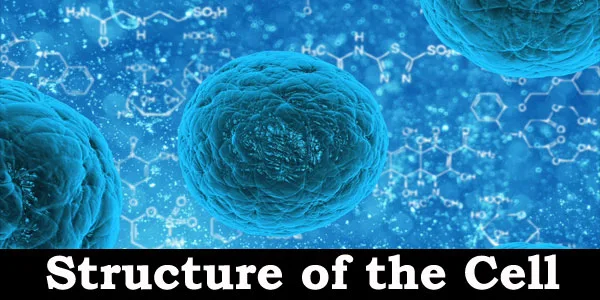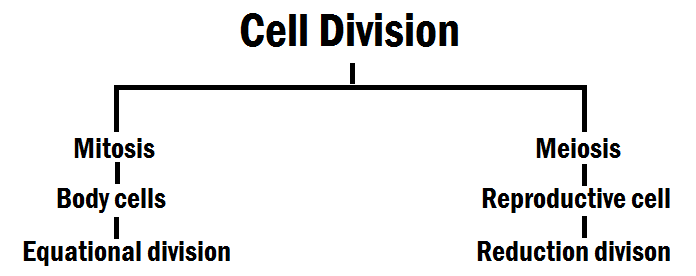- Cell wall found only in plant cells. It consists of non-living substances. eg: lignin, pectin, cellulose etc.
- Cell membrane (Plasma membrane)
- It is the outer membrane of the cytoplasm found both in animals and plants.
- Plasma membranes are composed of phospholipids and protein.
- Cytoplasm : It is a jelly like semi-solid ground substance in which various cell organelles are suspended. It helps in exchange of materials between cell organelles.
- Protoplasm : Cytoplasm together with the nucleus form the protoplasm - the living matter of the cell.
- Ribosomes : Small, dense, granular, spherical bodies found attached to the endoplasmic reticulum or in free state in the cytoplasm, composed of RNA and proteins. They help in synthesis of proteins.
- Endoplasmic Reticulum (ER) provides an ultra structural skeletal framework and mechanical support to the cell. So it is called Skeleton of the cell.
- Rough endoplasmic reticulum is the normal 'ER' with ribosomes attached to it. Only rough ER is involved in protein synthesis.
- Smooth endoplasmic reticulum - without ribosomes in it.
- Nucleus : The nucleus is the most prominent structure. It contains the genetical materials and also controls all cellular activities.
- Golgi bodies : Bag like structures formed of membrances. Their functions include secretion of various substances.
- Golgibodies : are often called traffic police of the cell because it plays a critical role in sorting many cellular protein and guiding them to their destination.
- Vacuole : A fluid filled sac within a cell. The watery fluid enclosed in the vacuole is called 'Cell Sap'. It is slightly acidic or neutral. Osmo-regulation is the main function. Membrane of vacuole is called tonoplast.
- Mitochondria : Rod like or spherical, semi-solid structures containing DNA. They are the sites of cellular respiration.
- Mitochondria is the power house of the cell. It is also a double-membrane bound organelle. The inner membrane is thrown into folds called cristae to increase the surface area.
- Peroxisomes and glyoxysomes are known as microbodies. They are enzyme bags.
- Lysosomes are sac like structure bounded by a single membrane. It is known as suicidal bags, as they contain hydrolysing enzymes. Occasionally they digest the whole cell or part of it.
- Plastids : Small discoid bodies found in the cytoplasm of higher plants. They are of many types.
- Chloroplasts : are the centres of photosynthetic activity. it is found only in photosynthetic activity. It is found only in photosynthetic plant cell. Chloroplast is a green plastid.
- (i) Leucoplasts : Colourless starch storing particles
- (ii) Chromoplasts : Are Coloured particles which give colour to fruits and flowers.
- Centrosome : A rather dense are of protoplasm, lies close to nucleus. It is found in animal cell only.
- Plant cell is different from animal cell as it contains cell wall and chloroplasts and devoid of centrioles which help in cell division.
- Adenosine Triphosphate (ATP provides energy for all kinds of activities of a cell.
- ATP is called the 'universal biological energy currency'.
- Energy is stored in the mitochondria as ATP molecules.
- Chromosome is thread like structure found in the nucleus.
- It becomes visible during cell division.
- Each Chromosome is made up of two chromatids joined together at a point called centromere.
- Genes are hereditary units which are the particular segments of DNA (Deoxyribonucleic acid) and carry genetic information from generation to generation.
- Chromosome is made up of DNA & proteins.
- Chromosomes, other than the sex chromosomes are called autosomes.
- Number of autosomes in a cells is 44 (22 pairs) and number of sex chromosomes is 2.
- Microfilaments - are fine thread like fibrils, made up of one of the major protein components, actin of muscle cells.
- Microtubules - are straight tubular structure that provide some rigidity to the cell.
- DNA (Deoxyribonucleic Acid) and RNA (Ribonucleic Acid) are two different nucleic acids found in the cells of every living organism. Both have significant roles to play a cell biology.
- DNA is found mainly in the nucleus of the cell, while RNA is found mainly in the cytoplasm of the cell.
- The structure of DNA was first deduced by J.D. Watson and F.H. Crick in 1953.
- Apoptosis - It is the programmed cell death or cells suicide. This occur when the cell has fulfilled its biological functions.
Cell Division
- Cell division is the process by which a parent cell divides into two or more daughter cells.
- Rudolf Virchow was the first to suggest that new cells are formed from the division of the pre-existing cells.
- Time taken for one cell division is called cell cycle.
- Human cell cycle is 24 hours.
- Cell division is of two types : Mitosis and Meiosis.
- Mitosis occur in body cells, results in formation of two daughter cells with equal number of chromosomes.
- Mitosis is called equational division.
- Meiosis occurs in reproductive cells. It causes a reduction in number of chromosomes in the cell.
- Meiosis is called reduction division.
- Division of nucleus during cell division is called Karyokinesis.
- Division of cytoplasm is called cytokinesis
- Two complete set of Chromosome is called diploid (found in somatic cell / body cell).
- Single set of chromosome in cell is called haploid (found in gametes - sperm/ovum)
- Exchange of genetic material between two non sister chromatids takes place during meiotic cell division is called crossing over.
-------------------------------------------------------------------------------------------------------




0 Comments